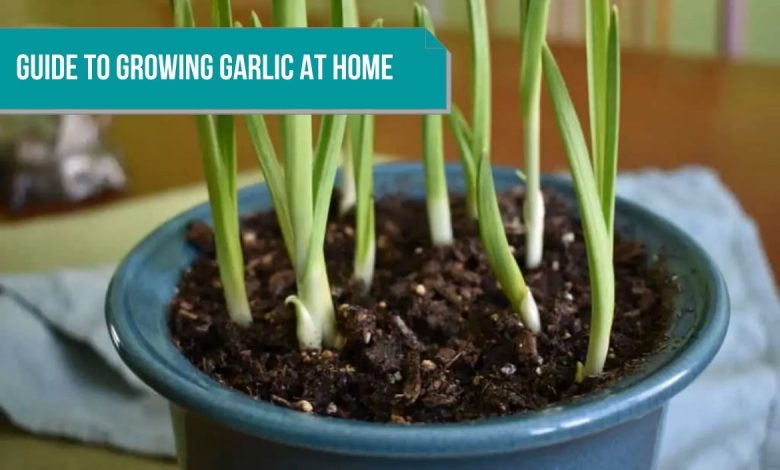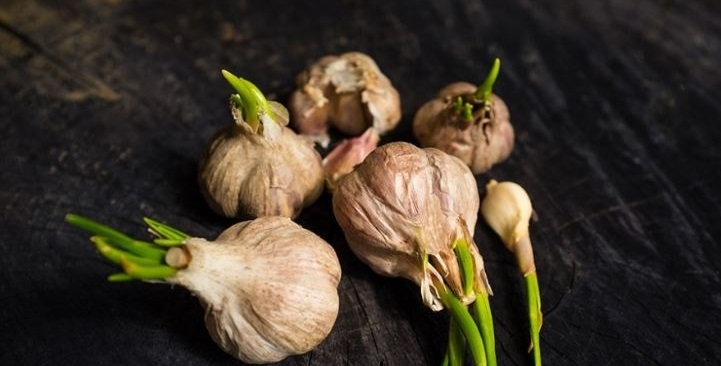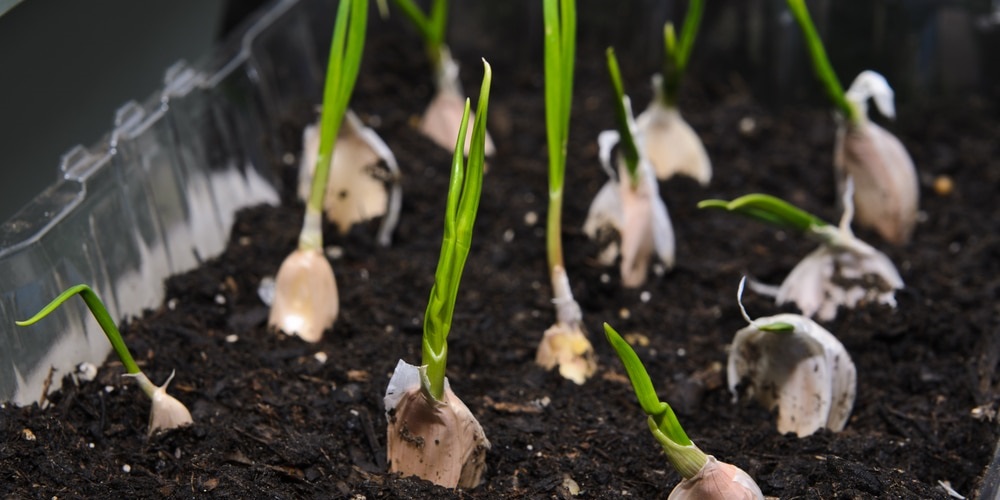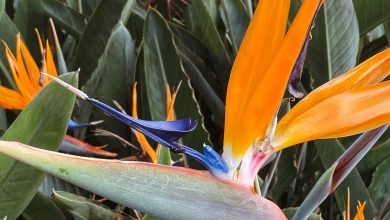All about planting garlic at home

Garlic comes from the bulb of the perennial plant that bears the same name and, in addition to being one of the most used ingredients in all kinds of recipes, thanks to the aroma and flavor it provides, it also has certain therapeutic qualities that could lead anyone to take an interest in growing it at home .
What is garlic?
Allium sativum is the scientific name for the garlic plant, which provides the well-known and appreciated culinary addition. It belongs to the Liliaceae family and it is presumed that its origin is Asian.
The characteristics of the plant are presented in flat and thin leaves, which can measure up to 30 centimeters long and its roots can be semi-deep, reaching 50 centimeters below the ground. On the other hand, the garlic flower is of great beauty, which is why many plant this plant for ornamental purposes. As for the bulb that contains the garlic that we all know, it is divided into segments commonly called «cloves» and each bulb contains between 6 to 12 of these cloves.
Garlic cultivation is a relatively simple process that does not require a large investment to be able to enjoy your own harvest. Besides, considering its usefulness in cooking, medicine and alternative treatments, it could be more beneficial than you imagine to have your own garlic crop at home.

How to plant garlic at home?
If you have been interested in growing garlic at home, in the following space we will indicate the steps you must follow from the moment you choose the seed to the harvest of your own garlic:
Select the garlic for planting
The seed to plant the garlic is obtained from the bulb of the plant itself, which should contain a maximum of 10 cloves, to guarantee good results when growing. At the same time, it’s important to note that the larger the seed you use, the larger the bulbs your garlic plant will produce.
Choose the land to plant
When sowing garlic, it is very important to ensure that the substrate and the plant have a good drainage system, so when choosing the soil where you want to sow your seeds, you must make sure that it is not too heavy, to facilitate handling and preparation, as well as low humidity levels.
Preparation of the substrate for planting
If you are wondering how to prepare the land to plant garlic, you should know that it is one of the most important steps that you must master, to guarantee the correct development of the plant and, therefore, the production of garlic bulbs.
Take the ground to break down any compression. It should feel loose when handled. Spread it over the pot and, at the end, put a layer of compost that is preferably organic. In the center, make a hole that is twice as deep as the size of the garlic, since this is where you will need to plant it.
Garlic seed planting
To plant garlic, it must still have its skin intact and be placed upright inside the hole in the ground. To identify which is the top of the garlic, you only need to identify the pointed side. Put it in the ground, cover it without pressing too much and pour a little more compost again, before watering it.
Plant care after sowing
Now that you have your garlic seed sown, you should focus your attention on its care. For example, when using watering cans to moisten the soil, you should not overdo it, since an excess of water could bring diseases to the plant. The same applies to the management of the substrate, which must be manipulated from time to time to break the upper part and allow access to water when watering the plant.
On the other hand, you should always try to provide the plant with the appropriate environmental parameters, considering that it needs a minimum of 11 hours of light per day and a temperature between 18 °C and 20 °C, to start its growth.

Elements that you must take into account before planting
garlic season
When to plant garlic is one of the questions of many of those interested and, although technically you could do it at any time of the year, the most recommended is winter, since in cold climates the bulb of the plant can reach a larger size and, therefore, So more garlic cloves.
However, the recommended months for planting this plant are August and September, due to its proximity to the cold season in many parts of the world.
harvest times
To know when the garlic is harvested, it is necessary to take into account the time of emergence of the outbreak. Usually, after sowing the seed, the sprout appears in the next 4 to 8 weeks, depending on the characteristics of the environment in which it is growing.
As for the harvest itself, you will have to wait approximately 4 to 5 months, until the plant has mostly turned yellow. When you notice this, you should stop watering for 2 weeks, before taking the bulbs, so that they dry out a bit. Once you have the garlic ready, you will need to hang it in a dry place to cure it for 5 days, so that it can lose as much moisture as possible, before using it.
leaf knotting
Leaf tying is a practice that is carried out during the time of absence of irrigation and can help stimulate the growth of the bulbs in the final stage of the harvest.
Therefore, to know when to tie the garlic and increase its size at the time of cultivation, you will have to check the state of the plant, to avoid going overboard, since the temperature inside the bulb could increase and affect the crop.
Its procedure is simple, since it is only enough to wrap the bulb with the same leaves of the plant, making a knot between them. According to some netizens, the size of the bulbs can be increased by up to a third, being an interesting technique to try.


![Photo of Bamboo Cuttings: [Concept, Time, Rooting and Planting]](https://www.complete-gardening.com/wp-content/uploads/2022/08/bamboo-cuttings-concept-time-rooting-and-planting-390x220.jpg)

